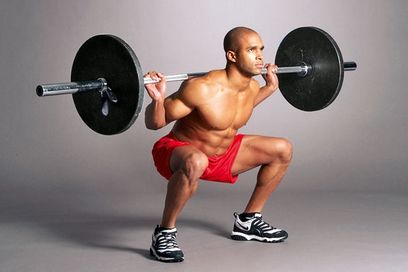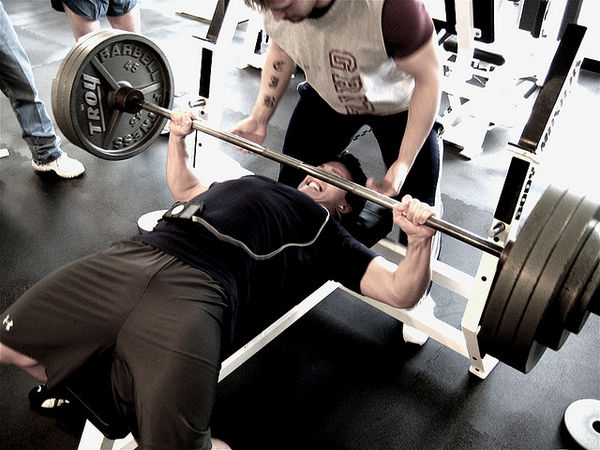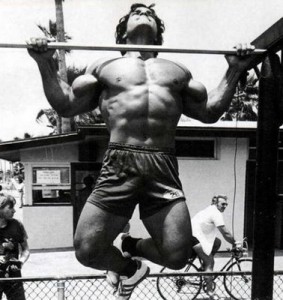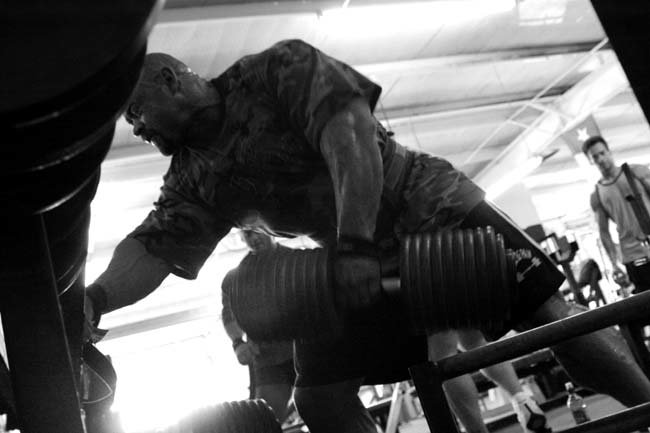The 3 Best Muscle Building Exercises You Should Be Doing
When it comes to building muscle I like to keep things simple. It’s easy to get caught up in the hype of hot new products and exercises that promise to be the next best thing in muscle building. Theses fancy exercises and products use long “scientific like” words and explanations to show you they work to build the most muscle.
In this article I am going to get back to basics. I am going to show your three muscle building exercises you can’t afford not to do and why you should be doing them. These three exercises are the grass roots of building muscle and are essential for any serious training program.
You might find it hard to believe, but with these three exercises alone you can pack on a serious amount of muscle. I refer to these exercises as the “core” to any good program. When I start planning I muscle building program for a client I always start with these three basic exercises and build the program around them.
3 core muscle building exercises:
Squat
The squat is the biggest exercise for packing on serious poundage. There’s no argument about it. The squat is primarily a leg building exercise. You start the exercise with a barbell resting across your shoulders standing straight up. Then bending at the knees and hips you lower the barbell down until your thighs are almost parallel to the floor. And then push the barbell back to the starting position.
The main muscle groups pulled into action for the squat are your quadriceps, hamstrings and glutes. Secondary muscle groups include the lower back, adductors and to a certain extent your shoulder muscles. As you can see many muscle groups are recruited for this exercise making it the biggest exercise and biggest potential muscle builder.
Like all the core muscle building exercises, you should make the squat the first exercise you do on your leg training day. Because it’s the biggest exercise you want your legs to be fresh and ready. If muscle building is your goal, aim for about 8-12 reps on the squat. Because you’ll be lifting heavy weights a good warm up is vital. Squatting is very stressful for the lower body, especially the knees, so 5-10 minutes on the treadmill and some lights squats first up are recommended.
Bench Press
The bench pres is the king of upper body building exercises. For years the bench press has been used to measure a lifter’s strength. How many times have you been asked “how much do you bench?” I bet you’ve never been asked how much do you squat or how many chin ups can you do.
The bench is a simple yet extremely powerful exercise that targets the entire chest (pectorals), front shoulders (deltoids) and triceps. To perform a bench press you must lie on your back on a flat bench, grip the barbell at slightly wider than shoulder grip and press the bar straight down to your chest.
The bench press is the biggest upper body builder because it allows you to move the most amount of weight possible. This is its advantage over the dumbbell press. With the help of a spotter you can also push yourself to lift heavier weights. There are also other advanced bench press techniques like board presses, bench press negatives and chain presses. See our link at the bottom for more details.
Wide grip Chin Up
If you were only going to do one exercise to work your back this would be it. The wide grip chin up is the ultimate test of a lifters power to weight ratio. This muscle building exercise is very demanding on the body.
The wide grip chin up primarily hits the lats, but also targets the entire upper back, biceps and forearms. To execute this exercise you need a chin up bar or assisted chin up machine. Hold the bar in a wide grip (greater than shoulder width) with your palms facing away from your body. Start in a “hanging” position with your arms fully extended. Pull yourself up until your can get your chin over the bar and lower back to starting position.
Most people will not be able to do wide grip chin ups without some lat/back training first. You can use the assisted chin up machine or lat pull down machine to strengthen your lats before attempting wide grip chin ups. This is the most demanding back exercise you can do so it must be the first exercise in your session.
When should you be doing these exercises?
Like I mentioned previously in this article, these exercises are the biggest muscle builders and also the most taxing on your body so they must be done at the beginning of your workout to get the maximum benefits. I recommend that you do up to 5 sets on each exercise and vary the way you perform these sets each week. For example, the first week you do pyramid up sets, the second week you pyramid down and the third week you do straight sets. This keeps your muscles from getting accustomed to your routine. Good luck packing on some serious pounds!





